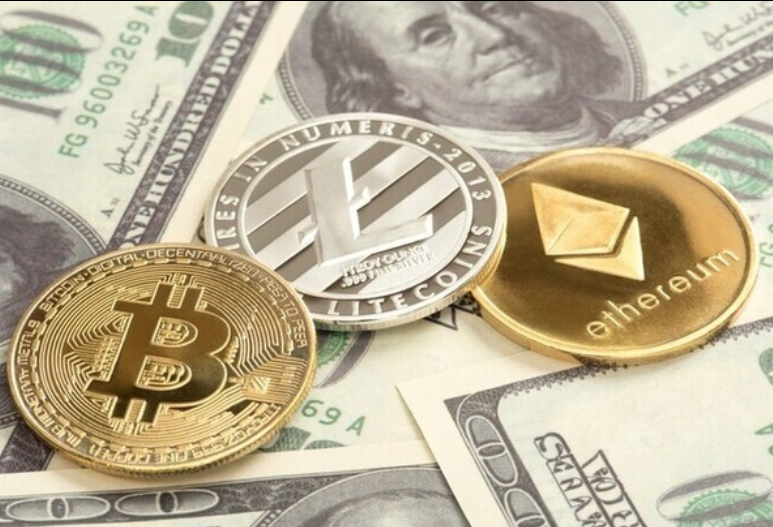A brief story on Cryptocurrency
Crypto, Bitcoin, Blockchain… those terms seem to be flooding every financial blog post and conversation these days. If you’re not a tech geek or a financial expert, it is only normal to get a bit confused. Don’t worry; we have your back! Before we jump into definitions, let’s go back to where it all started….
1980’s
A few precocious thinkers back in the 80s became infatuated with the idea of a currency that could not be traced and did not require centralized institutions -banks, essentially -to function. Such an idea remained like that -just a dream. It wasn’t until the mid-nineties when David Chaum came up with a sort of electronic currency he named Digicash. Digicash required user software to withdraw money from a bank; it also included encrypted keys -an essential part of the concept -before reaching the recipient’s hands.
Bitgold
By 1998, Nick Szabo developed Bit Gold (the predecessor of Bitcoin). Bit Gold required an individual to dedicate computer power to solve puzzles (cryptographic ones), the one who could solve the riddle got the “reward.” The only problem with Szabo’s concept was that it still needed a central authority to solve the double-spending problem (since digital information can be copied and pasted.)
Bitcoin
It wasn’t until 2008 when Satoshi Nakamoto developed a white paper called Bitcoin -A peer to peer electronic cash system. The first block of the Bitcoin network was mined in January 2009. Of course, being a new form of currency, it had little to no value in the first months -less than 14 cents!
The 2010s
Even when Bitcoin was not very valuable, it began to show to the world its true potential. Rising in 2011 to $1.06 each, it wasn’t until a Forbes story got published about the new Cryptocurrency that Bitcoin reached the skies. It went from a dollar to $8.89 in a matter of two months! By then, the market value of bitcoins totaled $130 million. In October 2011, Bitcoin faced its first real competitor, called Litecoin. Others such as Namecoin and Ripple trailed behind -all following the money trace Bitcoin was leaving behind. Like a rebel teenager eager to dominate the world, Bitcoin clashed due to criminal, federal, and regulatory-related issues.
Present
Facing fierce competition, technical and regulatory problems, the concept of Cryptocurrency is getting more accepted every day. In 2016, Bitcoin rose to become the technological, financial phenomenon that it is today. While its volatility and unpredictability still discourage those skeptical, no one can deny its revolutionary effect.
Lastly, you’re probably wondering how a bitcoin works vs. your regular dollar bill. The apparent difference is that Cryptocurrency does not exist in the physical world; you can trade them only digitally. Some detractors the blockchain technology say it leaves a too-large carbon footprint. Love it or hate it, Bitcoin and other cryptocurrencies have come to revolutionize the way to exchange money forever!
What are the most popular cryptocurrencies out there?
Not all cryptocurrencies are created equal, and while Bitcoin has been the leader for a while, there are many others worth checking out! Let’s review the most popular cryptocurrencies quickly:
Bitcoin. No surprise here, as virtually anyone who thinks about cryptocurrencies thinks about Bitcoin. Still reigning in the digital-cash world, its market cap stands at more than one trillion! To make it in simple terms, Bitcoin is more prominent than Facebook and Tesla. Simply by being the first one, the advantage over the rest is obvious -as more people trust it.
Ethereum. Trailing Bitcoin comes Ethereum, with a market value of $500 billion. Some of its fans say Ethereum will eventually replace Bitcoin. Ethereum is particularly great for creating non-fungible tokens.
Binance Coin. Operating the largest cryptocurrency exchange globally and ranking in third place, Binance coin has a market cap of little less than $100 billion. Binance has the advantage of reducing the supply of digital currencies based on trading volume; Its investors receive a discount with each transaction paid.
Tether. Coming in 4th place, Tether has a market value of a little over $70 billion. But among stable coins, Tether takes the top spot. All stablecoins tie their value to another asset. For Tether, that asset is the U.S. dollar. In theory, a Tether and a U.S. dollar should always have the same value -something that the Treasury Department does not appreciate, as they see it not convenient for a digital currency to be as stable as Tether.
Solana. Last in the top five, and with a market cap of $65 billion, comes Solana. Coincidentally, Solana was the biggest winner last year with a gain of over 10,000%. Similar in its processes, Solana offers much faster processing speeds and lower transaction fees than Ethereum.
Did you know Miami has its own Cryptocurrency?
Fasten your seatbelts as our beloved city hovers the headlines again! Mayor Francis Suarez said: “We’re going to be the first city in America to give a bitcoin yield as a dividend directly to its residents.” And this is very true as the city of Miami will share some of its profits from the city’s new Cryptocurrency -called MiamiCoin -to be distributed through digital wallets.
Launched this past August, the MiamiCoin has generated over $21 million in the past three months. If it keeps its pace, it will amount to $80 million yearly, a big chunk of the city’s total annual tax revenue.
Different groups of people have different needs in terms of monetary policy. Hard money, like bills, is suitable for some, while digital cash works better under other circumstances. If MiamiCoin grows, eventually, the authorities leading the city will have to decide whether it needs to claim not just a share of the profits from MIA, but some measure of control, as well.

